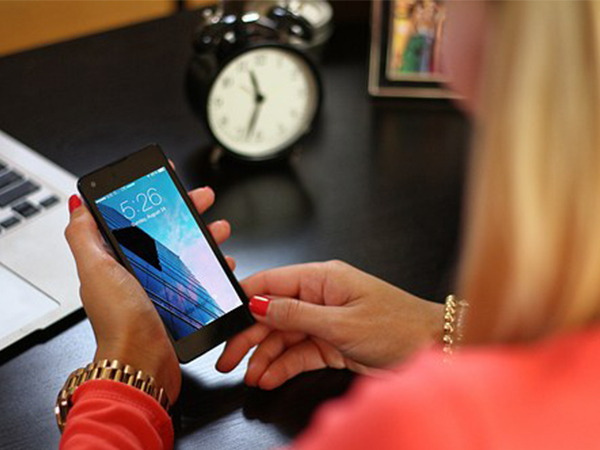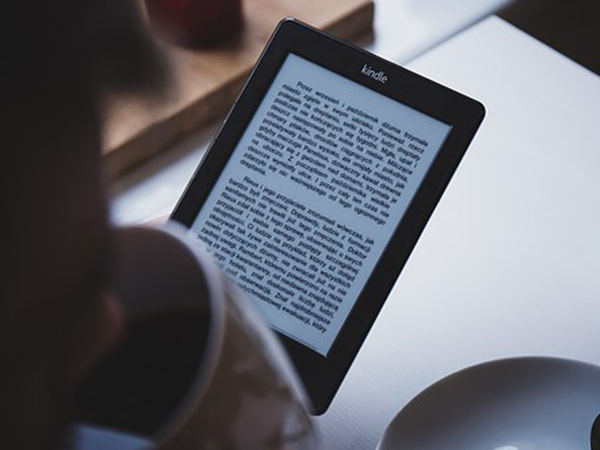Just In
- 2 hrs ago

- 2 hrs ago

- 6 hrs ago

- 12 hrs ago

Don't Miss
- Sports
 Who Won Yesterday's IPL Match 34? LSG vs CSK, IPL 2024 on April 19: KL Rahul Stellar Batting Show Decimate Chennai Bowling
Who Won Yesterday's IPL Match 34? LSG vs CSK, IPL 2024 on April 19: KL Rahul Stellar Batting Show Decimate Chennai Bowling - Finance
 Rs 17/Share Dividend: Record Date On April 26; Buy The ICICI Group Stock To Be Eligible?
Rs 17/Share Dividend: Record Date On April 26; Buy The ICICI Group Stock To Be Eligible? - Movies
 Chief Detective 1958 Episode 2 OTT Release Date, Time, Platform: When & Where To Watch? What To Expect? DEETS
Chief Detective 1958 Episode 2 OTT Release Date, Time, Platform: When & Where To Watch? What To Expect? DEETS - News
 Chinese President Xi Jinping Orders Biggest Military Reorganisation Since 2015
Chinese President Xi Jinping Orders Biggest Military Reorganisation Since 2015 - Education
 Exam Pressure Does Not Exist; Studying Punctually is Crucial; Says Aditi, the PSEB 2024 Topper
Exam Pressure Does Not Exist; Studying Punctually is Crucial; Says Aditi, the PSEB 2024 Topper - Automobiles
 Suzuki Swift Hatchback Scores 4 Star Safety Rating At JNCAP – ADAS, New Engine & More
Suzuki Swift Hatchback Scores 4 Star Safety Rating At JNCAP – ADAS, New Engine & More - Technology
 Dell Introduces AI-Powered Laptops and Mobile Workstations for Enterprises in India
Dell Introduces AI-Powered Laptops and Mobile Workstations for Enterprises in India - Travel
 Journey From Delhi To Ooty: Top Transport Options And Attractions
Journey From Delhi To Ooty: Top Transport Options And Attractions
Eyestrain (Asthenopia): Causes, Symptoms, Diagnosis And Treatment
Do your eyes always feel sore, tired and achy? Do the symptoms worsen after you have been reading for a long period of time? Or, maybe your eyes feel strained after a series of text messages on your smartphone. Experiencing any of these could mean that you might have excessive eyestrain or a condition that in clinical terms is known as 'asthenopia'.

Read on to know more about this condition, its symptoms, primary causes, treatment and prevention methods.
What Is Eyestrain (Asthenopia)?
More commonly known as eyestrain or ocular fatigue, asthenopia is a common condition that occurs when the eyes become tired after intense use [1] . The common causes for this are looking at the computer screen for extended periods and straining to see under dim light condition.

Most of the time this condition is not serious and the symptoms tend to vanish once you begin to rest your eyes. However, it is important to know that sometimes asthenopia could be related to an underlying vision problem such as farsightedness or astigmatism [2] .
Causes Of Eyestrain (Asthenopia)
One of the topmost causes of asthenopia is the prolonged use of computers and digital devices. This condition has also come to be referred to as 'computer vision syndrome' or 'digital eyestrain' [3] .

Apart from looking at screens for extended periods, the following are some of the other prime causes of this condition [4] :
- Being stressed or fatigued
- Reading for a long time at a stretch
- Driving long distances
- Trying to see in dim or dark surroundings
- Exposure to constant bright light
- Indulging in activities that require intense focus
- Underlying eye conditions such as uncorrected vision or dry eye
- Exposure to dry moving air (fan, heater, etc.)
Symptoms Of Eyestrain (Asthenopia)
Although the symptoms can vary from person to person depending on the cause, the most common symptoms are as follows [5] :

- Headache that is aggravated whenever you strain your eyes
- Blurred vision
- Pain around the eyes
- Dry or watery eyes
- Burning sensation in the eyes
- Sore or tired eyes
- Vertigo
- Difficulty keeping your eyes open
- Sensitivity to light
- Sleepiness
- Poor concentration
Few people may also experience reflex symptoms from asthenopia. These include the following [6] :
- Nausea
- Twitching of facial muscles
- Migraine
Natural Remedies For Treating Eyestrain (Asthenopia)
Few changes to your surrounding and your daily lifestyle should be sufficient to treat asthenopia effectively. The following are some tips that can help you treat asthenopia at home:
- Practice smarter screen time: The symptoms of asthenopia can be improved drastically by limiting the amount of time that you spend focusing on a computer screen or digital device. Also, follow the below tips when working at your computer or using a digital device:
- Follow the 20-20-20 rule [7] . Take a break every 20 minutes and look at an object that is at least 20 feet away, for 20 seconds.
- Sit at an arm's length (about 25 inches) from the computer screen.
- Position your screen such that your gaze is slightly downward [8] .
- When looking at a glass screen, prefer using a matte screen filter [9] . This would reduce the glare.
- Adjust the screen settings (brightness, contrast, font size, etc.) such that it is easier to read.

- Adjust the lighting [10] : When performing tasks such as sewing or reading, ensure that there is ample light in your surrounding. This can be very helpful in reducing eyestrain and fatigue. When doing a job of intense focus, place the light source behind your back and position it such that the light is directed onto your task. Make use of a lampshade when working or reading at a desk. When watching television, prefer dim lighting in the room.

- Use artificial tears: To keep your eyes lubricated, use the over-the-counter artificial tears. This can prevent/relieve dry eyes caused due to straining [11] . Always use them before sitting down to work at a computer. Use the lubricating eye drops that do not contain preservatives.
- Take breaks: Your eyes get strained when you focus on something at a stretch without taking a break. Take periodic breaks when driving, using a computer or reading.
- Improve the air quality of your surroundings: You can use a humidifier to change the quality of the air around you. These can help in preventing dry eyes [12] . Move your chair away from the heating and air conditioning vents. Do not have air blown directly at your face.
Medical Treatment For Eyestrain (Asthenopia)
When symptoms of asthenopia are severe or linked to another underlying condition, then medical intervention becomes necessary. Consult an ophthalmologist if you continue to face severe symptoms of asthenopia in spite of making changes in your lifestyle such as reduced screen time. Medical treatment for asthenopia might include the following [13] :
- Contact lenses
- Glasses
- Refractive surgery
- Prescription eye drops
Risk Factors And Complications
People who have binocular vision disorder [14] are at a greater risk for asthenopia. Also, people who work on the computer for a good portion of the day are also at a higher risk of developing symptoms of this condition. Studies show that about 70 per cent of computer users would experience asthenopia at some point in their life [15] . Going by statistics, the elderly population have been observed to have a higher incidence of dry eye syndrome.
Eyestrain does not have any long-term or serious complications or consequences as such. However, if left untreated, it can aggravate and turn unpleasant. It can reduce your ability to concentrate to a great extent.
How To Prevent Eyestrain (Asthenopia)
The best way to prevent this condition is to limit activities that can strain your eyes. Always take enough breaks when engaging in tasks that require intense focus. Limit the time that you spend on your digital device or computer.

Also, ensure that you have regular eye examinations [16] . This can help in early diagnosis and treatment of vision-related changes or other eye problems.
Moreover, people who suffer from diabetes or high blood pressure are at an increased risk for developing an eye disease. Therefore, they should maintain regular appointments with an ophthalmologist.
- [1] Sheedy, J. E., Hayes, J., & Engle, A. J. (2003). Is all asthenopia the same?.Optometry and vision science,80(11), 732-739.
- [2] Schellini, S., Ferraz, F., Opromolla, P., Oliveira, L., & Padovani, C. (2016). Main visual symptoms associated to refractive errors and spectacle need in a Brazilian population.International journal of ophthalmology,9(11), 1657–1662.
- [3] Blehm, C., Vishnu, S., Khattak, A., Mitra, S., & Yee, R. W. (2005). Computer vision syndrome: a review.Survey of ophthalmology,50(3), 253-262.
- [4] Sheppard, A. L., & Wolffsohn, J. S. (2018). Digital eyestrain: prevalence, measurement and amelioration.BMJ open ophthalmology,3(1), e000146.
- [5] Nakaishi, H., & Yamada, Y. (1999). Abnormal tear dynamics and symptoms of eyestrain in operators of visual display terminals.Occupational and environmental medicine,56(1), 6–9.
- [6] Rhatigan, M., Byrne, C., & Logan, P. (2017). Spasm of the near reflex: A case report.American journal of ophthalmology case reports,6, 35–37.
- [7] Sheppard, A. L., & Wolffsohn, J. S. (2018). Digital eyestrain: prevalence, measurement and amelioration.BMJ open ophthalmology,3(1), e000146.
- [8] Bhanderi, D. J., Choudhary, S., & Doshi, V. G. (2008). A community-based study of asthenopia in computer operators.Indian journal of ophthalmology,56(1), 51–55.
- [9] Lawrenson, J. G., Hull, C. C., & Downie, L. E. (2017). The effect of blue‐light blocking spectacle lenses on visual performance, macular health and the sleep‐wake cycle: a systematic review of the literature.Ophthalmic and Physiological Optics,37(6), 644-654.
- [10] Hiramoto, K., Yamate, Y., Orita, K., Jikumaru, M., Kasahara, E., Sato, E., ... & Inoue, M. (2010). Prevention of scattered light-induced asthenopia and fatigue by a polarized filter.Photodermatology, Photoimmunology And Photomedicine,26(2), 89.
- [11] Ranasinghe, P., Wathurapatha, W. S., Perera, Y. S., Lamabadusuriya, D. A., Kulatunga, S., Jayawardana, N., & Katulanda, P. (2016). Computer vision syndrome among computer office workers in a developing country: an evaluation of prevalence and risk factors.BMC research notes,9, 150.
- [12] Han, C. C., Liu, R., Liu, R. R., Zhu, Z. H., Yu, R. B., & Ma, L. (2013). Prevalence of asthenopia and its risk factors in Chinese college students.International journal of ophthalmology,6(5), 718–722.
- [13] Ueno, R. (2014).U.S. Patent No. 8,889,735. Washington, DC: U.S. Patent and Trademark Office.
- [14] García-Muñoz, Á., Carbonell-Bonete, S., & Cacho-Martínez, P. (2014). Symptomatology associated with accommodative and binocular vision anomalies.Journal of optometry,7(4), 178–192.
- [15] Bogdănici, C. M., Săndulache, D. E., & Nechita, C. A. (2017). Eyesight quality and Computer Vision Syndrome.Romanian journal of ophthalmology,61(2), 112–116.
- [16] Porcar, E., Pons, A. M., & Lorente, A. (2016). Visual and ocular effects from the use of flat-panel displays.International journal of ophthalmology,9(6), 881–885.
-
 healthWhat Is Corneal Tattooing? Why Is It A Breakthrough in Oculoplastic Surgery?
healthWhat Is Corneal Tattooing? Why Is It A Breakthrough in Oculoplastic Surgery? -
 healthCan Steroid Eye Drops Cause Blindness?
healthCan Steroid Eye Drops Cause Blindness? -
 healthEye Flu Cases Rise In India: 5 Home Remedies To Prevent Conjunctivitis Virus In Monsoon
healthEye Flu Cases Rise In India: 5 Home Remedies To Prevent Conjunctivitis Virus In Monsoon -
 healthMLSI Observes Wellness Week: Organizes Myopia Awareness Program For Children In Association With Entod Pharmac
healthMLSI Observes Wellness Week: Organizes Myopia Awareness Program For Children In Association With Entod Pharmac -
 healthMyths vs Facts: Can Carrots Give You Night Vision?
healthMyths vs Facts: Can Carrots Give You Night Vision? -
 wellnessCataract Surgery: Types, Pros And Cons; Expert Explains Everything You Need To Know
wellnessCataract Surgery: Types, Pros And Cons; Expert Explains Everything You Need To Know -
 disorders cureStye (Lump On The Eyelid): Causes, Symptoms, Risk Factors, Complication, Treatments And Prevention
disorders cureStye (Lump On The Eyelid): Causes, Symptoms, Risk Factors, Complication, Treatments And Prevention -
 wellnessWhat You Need To Know About LASIK Surgery
wellnessWhat You Need To Know About LASIK Surgery -
 disorders cureEye Floaters: Symptoms, Causes And Treatment
disorders cureEye Floaters: Symptoms, Causes And Treatment -
 disorders cureVeteran Actor Arun Bali Passes Away At 79: What Is Myasthenia Gravis: Symptoms, Causes And Complications
disorders cureVeteran Actor Arun Bali Passes Away At 79: What Is Myasthenia Gravis: Symptoms, Causes And Complications -
 kids14 Home Remedies For Conjunctivitis (Pink Eye) In Babies
kids14 Home Remedies For Conjunctivitis (Pink Eye) In Babies -
 wellnessAyurveda Is The Key To Improve Your Eye Health
wellnessAyurveda Is The Key To Improve Your Eye Health


 Click it and Unblock the Notifications
Click it and Unblock the Notifications



